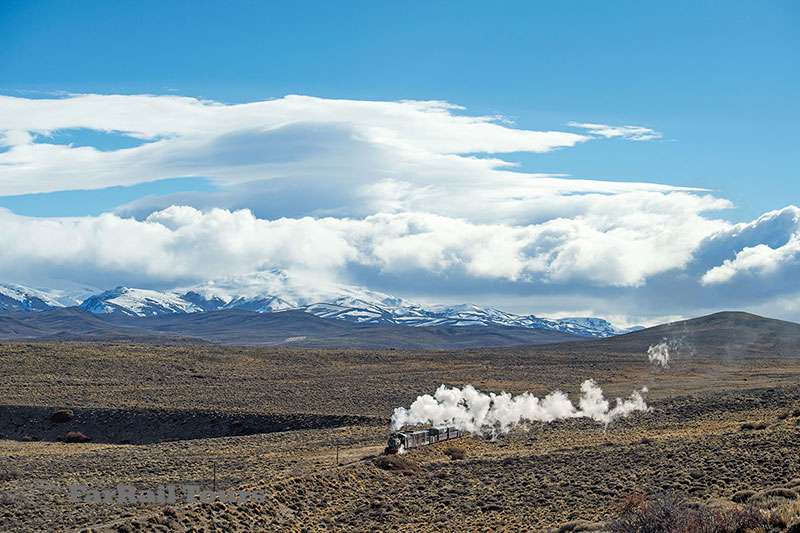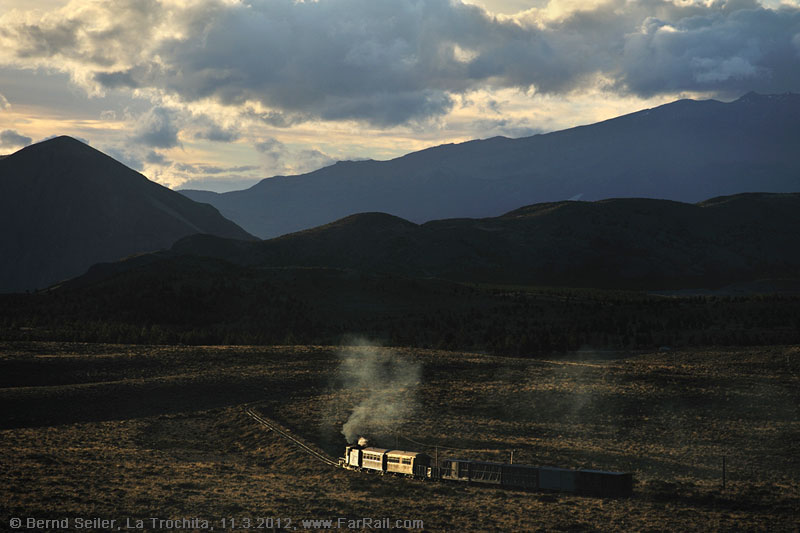The Old Patagonian Express: ‘La Trochita’
Argentina- Patagonia: on 750 mm along the Andes 02.09.2023 – 13.09.2023
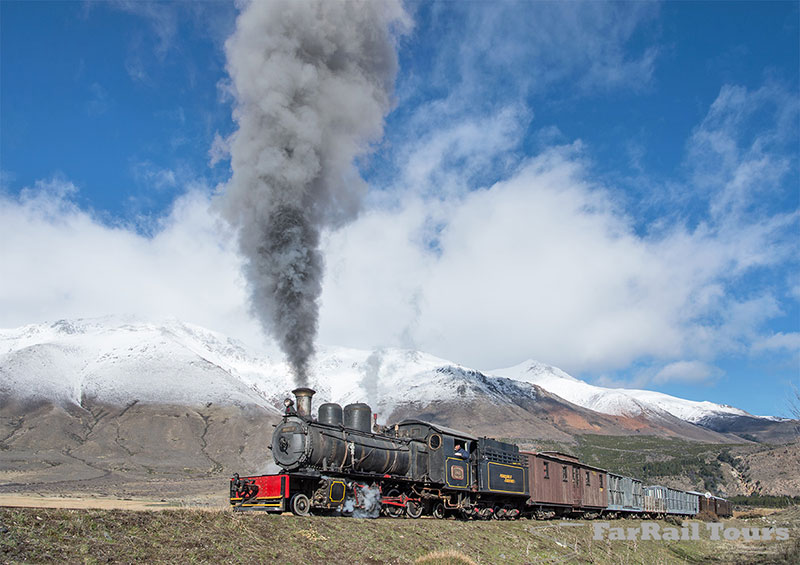
Due to Paul Theroux’s travel novel ‘The Old Patagonia Express’ La Trochita achieved a certain fame. On this magic line lies the focus of our renewed journey to a railroad of superlatives. In addition, we will search for the last remaining broad-gauge and standard-gauge steam in Buenos Aires.
In one of the popular cafés of Ing Jacobacci, deep in Patagonia, the walls are decorated with photos of the 750 mm gauge railway, which follows the Andes. Some of the pictures of the legendary “La Trochita”, or better known as “The old Patagonian Express” show winter photos. Winter in the inner Andes can be photographically extremely interesting, but also stormy with clouds hanging low over the mountains, covering their snow capped tops. A good time to adjourn into the 1922-built wooden planked passenger coaches heated by iron stoves. Alternatively into the restaurant car, (which always used to be attached to the trains) to have a glass of mulled wine. But when the sun peeps through the dark clouds sending its rays to the train it’s time to get out into the amazing vast countryside to take one of these magnificent shots you can only capture in winter time.
The railway closed to regular traffic in the mid 1990´s and this is only the second time since then that a special train will cover the majority of the line in winter. It is the longest preserved railway in the world, and still uses its original locomotives and rolling stock from 100 years ago.
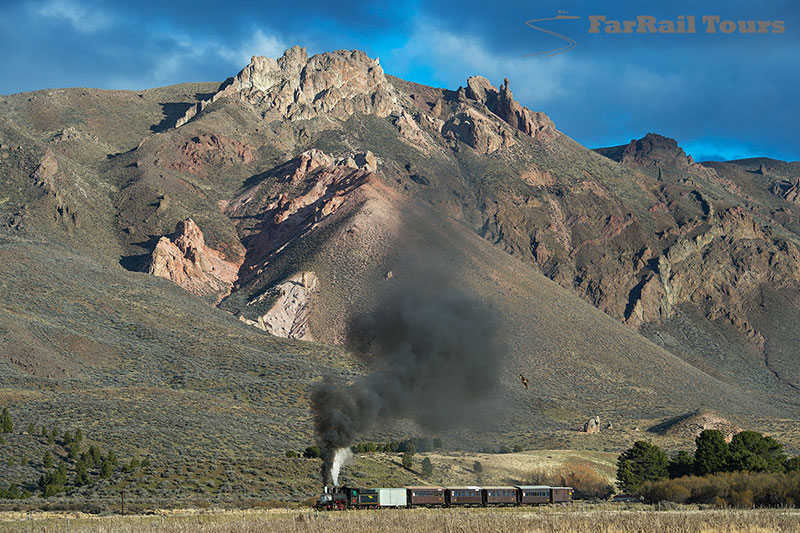
After our Patagonia tours turned out to be so successful and exceeding expectations we want to visit the fantastic little line again, this time in winter when the weather conditions may allow you some spectacular shots which are not possible in any other season.
‘La Trochita’ – tiny gauge – as the locals call their 250 mile long narrow gauge railway in southern Argentina, compared to the broad gauge line to San Carlos de Bariloche, this 750 mm gauge appears to be really small. It was planned to refurbish the whole northern part of the line, but an American group who planned to use the full length of the Río Negro section of the railway cancelled their planned trip, hence the railways didn’t start the refurbishment of the tracks beyond Cerro Mesa. Due to political problems a part in the middle of the line can’t be covered, too. We will travel on some 65% of the line, so you can have it all: the experience of travelling in a vast open countryside and fantastic pictures and video sequences of the amazing little train crossing it.
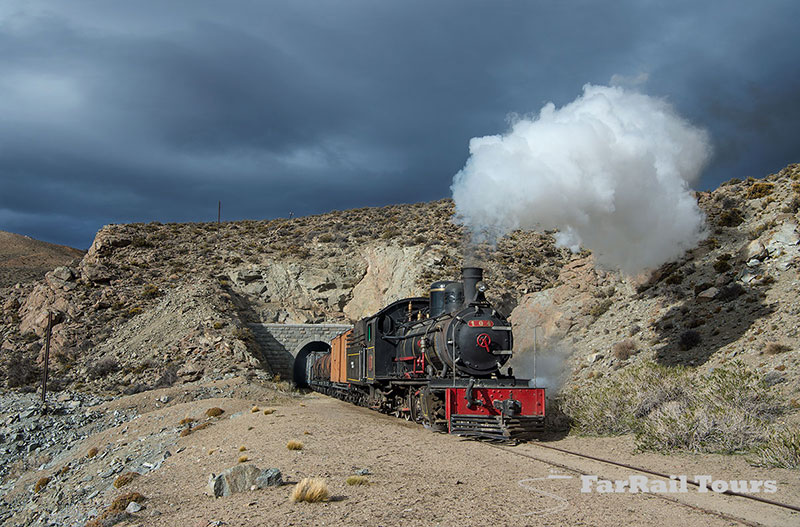
The line is sandwiched between the endless plains of Patagonia and the high mountains of the Andes, South America’s predominating mountain range. Combining rapid weather changes between dark skies, looking like the end of the world, snow storms, hail showers and crystal clear, deep blue skies, you’ll find an enormous range of impressive situations and photographic opportunities which cannot be found on any other steam railway in the world. This railway is unique in many respects, nothing compares to it. This doesn’t apply to the line only, but also the enormous task of arranging really authentic looking trains here. The available rolling stock from the 1920ies is fantastic, but the details need to be set up properly. Sure, we have to admit that our target is tough and no-one before has asked for what we asked for. That’s why we are not just selling tickets for another operator’s tour, but are offering our own programme for dedicated and demanding railway photographers and video film makers. All this means, for instance, that we’ll try again to remove tourist decorations from the train and include the repainting of tenders to change them from “The Old Patagonian Express“ or “La Trochita“ to “Ferrocarriles Argentinos“ again. As we expect new people in office it’s for sure that we’ll need to work hard on this issue as we did before: starting again and again from scratch, explaining why, funding them, pushing them. In the end we always succeeded, and, surprisingly, the letters “Ferrocarriles Argentinos” remained many months at the tenders of the locomotives used by us.
Photographs of the line in winter are few. But aunty Google and it’s sister YouTube can help out. Following are some links with wintery photos and at the end you’ll find some more. Once you’ve seen these you’ll wonder why everyone wants to visit Patagonia only in summer. Sure, the weather can be nasty in winter, but this can happen in any season down there. Without trying you’ll never found out what the Patagonian winter can offer.
If the sky is deep blue, then it looks like this YouTube video: https://www.youtube.com/watch?v=EY14pu_TI8s
Without a train, but the wintery landscape – fantastic! And here: the magic with a steam train!
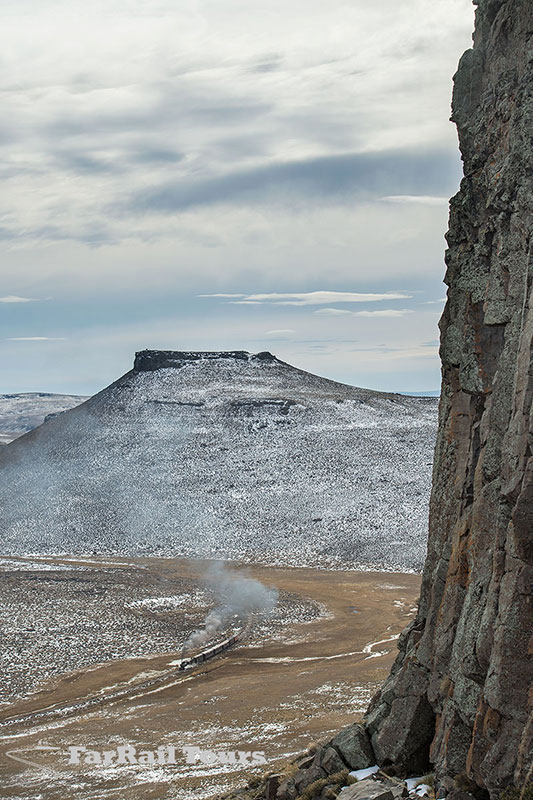
top
Itinerary
top
Line Description
In short, the line is phenomenal and can’t be compared with any other narrow gauge line due to its unique character. There is no other 250 mile long narrow gauge line offering steam trains!
The rolling stock dates from the early 1920s and is 100% original. The locomotives were built by Henschel and Baldwin. We’ll see at least four different locomotives in steam.
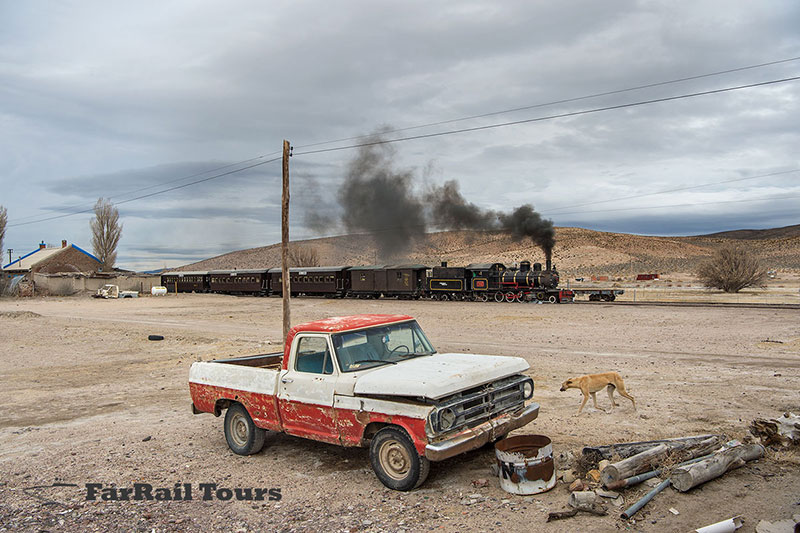
The railway was constructed to give the remote parts of Argentina access to the economically better developed north. Before WWI there were plans to connect Patagonia to the growing railway network; however, like many other things in southern America, it took longer than estimated. The first locomotives were purchased in 1922, a huge number for a then non-existent railway. They ordered 25 2-8-2-locomotives from Baldwin, USA, and 56 from Henschel, Germany. The latter manufacturer delivered 50 2-8-2 locomotives, four 0-6-0 tank engines (saturated steam locomotives for shunting purposes) and two crane locomotives. The railway track was then laid over 20 years between 1925 and 1945. The long 750 mm gauge line was probably never economical, but its route runs through grandiose sections of untouched countryside. From the railway, you have spectacular views of the Andes, up to 2,500 metres (more than 8,000 feet) high, plus wide valleys and endless grasslands.
The railway can be divided into the northern section, from Ing. Jacobacci to El Maitén, which lays almost entirely in the province of Río Negros, and the southern section from El Maitén to Esquel, in the province of Chubut. El Maitén is just south of the middle of the railway and hosts the workshop of the line.

From the 1970s, the always sparse freight traffic was taken over by road competition, although at that time most of the roads in that region were still unpaved gravel. Nowadays they have asphalt roads to Esquel but not along the northern section of the railway and not to Ingeniero Jacobacci from Bariloche. The weekly pair of passenger trains, however, became more and more frequented by tourists coming to see this superb railway in this very remote part of the world. The state railway wanted to rid itself of this loss making line. By the mid 1990s, the state railway finally handed over the complete line and rolling stock to the provincial governments of Río Negros and Chubut. Shortly afterwards, the regular passenger service was suspended. The provincial governments realised the tourist potential but didn’t initially have any idea how to develop or promote the line. For many years it lacked the necessary money for investment. The northern section between El Maitén and Ing Jacobacci was in such a bad state that trains were temporarily stopped altogether.
From Ing. Jacobacci the line heads first south-west and then turns towards El Maitén to the south. West of Río Chico you’ll find the one and only tunnel on the line. To the north-eastern end is a deep cutting and close by is the longest steel bridge on the line (105 m long). In other parts, the line offers exceptional long distance views across typical Patagonian countryside towards the mountain range of the Andes. Along the way, you’ll find almost abandoned stations, water stations, small and medium sized bridges, many, sometimes challenging gradients and beautifully shaped S-curves. Incidentally, the FarRail logo was modelled on a picture from one of these S-curves on La Trochita!
The weather in Patagonia may prevent the odd photo, but on the other hand it can be a key factor in getting superb shots of dramatic lighting situations, when dark clouds float over the Andes, and the sun sends intense rays that gives our train a glorious glint in front of a black backdrop. It can be very windy in this part of the world and the weather can change within minutes. You should never call it a day because of the weather until the very last light has gone. The most impressive pictures may just be waiting for you shortly after sunrise or shortly before sunset. The winter adds some additional potential for fantastic climatic conditions, although every season has days when you can’t take classic shots.
In Buenos Aires, two railrway clubs take care of some historic locomotives. The urban area of Buenos Aires is hardly suitable for photo runpasts due to the dense occupancy of the lines, but there is no permission for lines outside Buenos Aires. Therefore, we plan only to visit the two steam depots in Buenos Aires, Lynch and Haedo.
This is a picture of the DMU we'll use from Bariloche to Ing. Jacobacci:
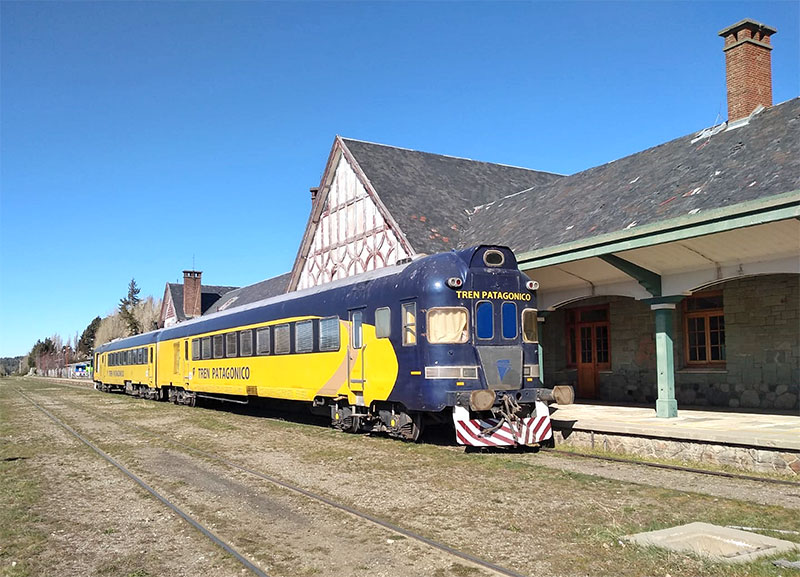
One of the dumped standard gauge locos in Lynch:

top
Small Print
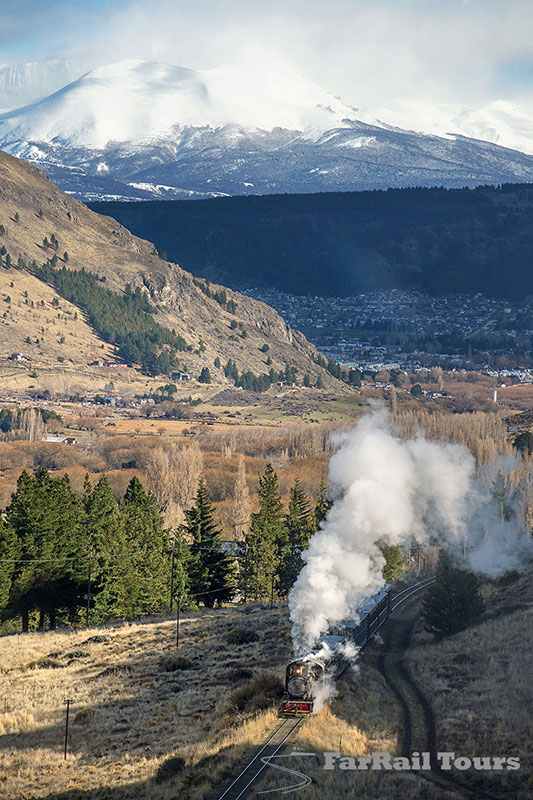
To get a feeling for the challenges and advantages of Patagonia please read the trip reports from the previous trips to Argentina.
Political conditions can impact state employees, with each election causing unease. Everyone who depends on the government fears the loss of their job. Everything seems to be paralysed and answers are even harder to get than before. No-one wants to move, no-one wants to make a mistake, no-one wants to invest in something. This is a very tricky situation when organising such tours. But from our recent experience in the country, I’m quite confident that the Argentineans will solve the problem their way – at the very last moment, but just in time. Don’t ask how, and don’t ask how well I can sleep with this attitude to sorting out and discussing things, but it worked three times already.
So here is the railway gem of the world, Patagonia with its most scenic line. Nothing can be guaranteed except that we’ll try everything to again make it a wonderful success.
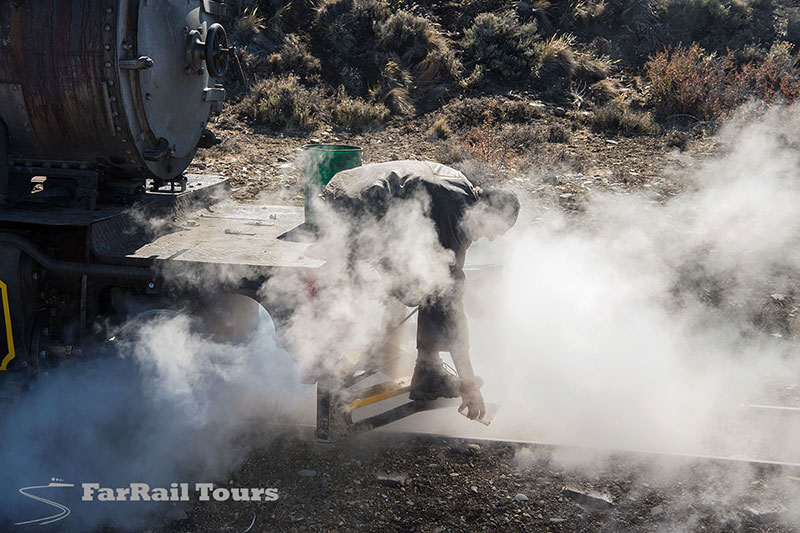
For a long time, it seemed to be impossible to reach an agreement to run authentic trains, and we were really happy to see the ordered freight wagons and locos with “Ferrocarriles Argentinos” logos as we arrived. Actually, I went to a general store in Esquel, bought spray paint and, with the help of a stencil, I sprayed the “Ferrocarriles Argentinos” logo on the freight wagons. And this not only happened in 2012, but also on the tour in 2014 and 2019. Only after I arrived did things progress and on the very last day before the first train was due to move, did they change the tender inscriptions! Arranging such an event didn’t get any easier since then. Please be prepared that not everything will run smoothly, like a Swiss clock. Expecting the worst and hoping for the best is the approach to make this tour an enjoyable one for you. For example if heavy snow falls our trains may be delayed while a snow plough clears the line.
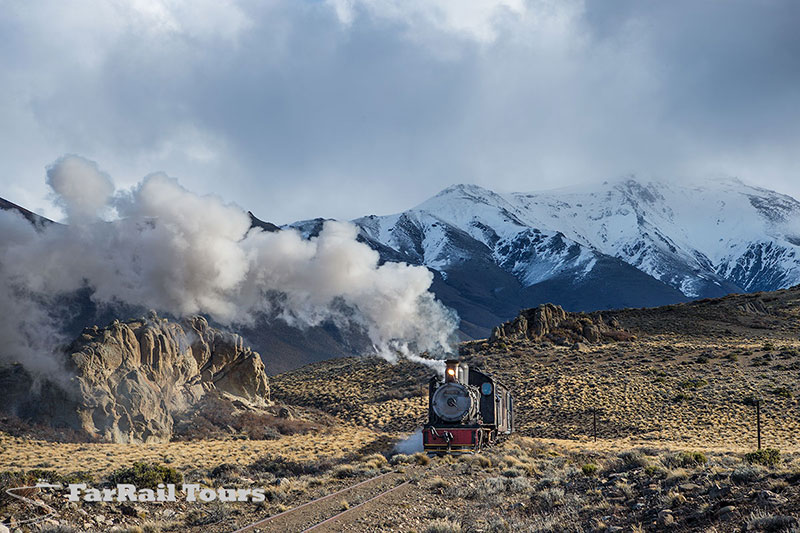
We completely depend on the good work of third parties and have arranged the tour in trust. Hence, and I have to mention it again, we cannot guarantee anything other than that we’ll always try to make things happen the way we want them. There is no reason to contact a lawyer if something doesn’t work out as planned/hoped/wished/paid for, if trains don’t look as we ordered them or if locomotives fail or derailments occur, etc. From our Argentinean partners we can expect no refund or compensation in such cases, so you must accept that there won’t be any refunds possible in any case. You have to live with the risks if you want to take part in this event, and by registering you accept this as a given. From our experience with many other not-so-easy-to-arrange-countries, such as Brazil, Paraguay, Cuba, the Philippines or North Korea we know that it’s very likely we’ll get what we want in Argentina again: excellent pictures, intimate views of the local life and many great impressions.
The survival of this long line is really quite uncertain, even in the southern province of Chubut. In the peak season of 2013 the railwaymen went on strike – and the governor of Chubut discussed in public the idea of shutting down the line and dismissing the workers. On the other hand: they repaired the broad gauge railway line which was closed after a derailment and destroyed after severe weather – the same which affected the narrow gauge line. There are also announcements from politicians that they’ll keep the line alive. But who believes an Argentinean politician if you don’t trust your own politicians at home (for good reason, I guess)? After any election things may change completely – but it will take at least a year to see the changes. That’s why we go there again now, before cut backs in infrastructure may terminate such tours. In Ing. Jacobacci and Esquel they would need to invest a huge amount of money to catch up with the not yet done but necessary track maintenance. Ing, Jacobacci can be reached only over dusty or muddy gravel roads so far (and by broad gauge train). It’s likely that they’ll invest in their road system first – although they’ve announced a plan to re-open the whole line for regular service with modern railcars. The current government didn’t give a statement about these plans so far.
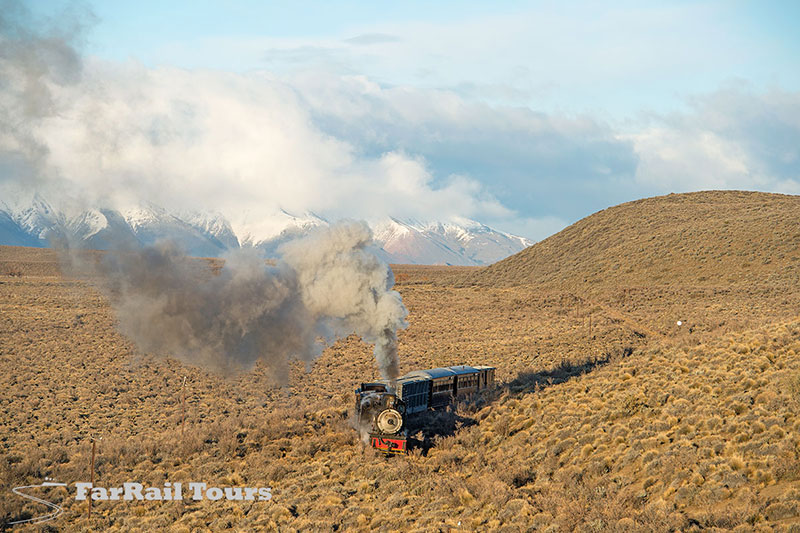
We will – as usual – consider the trains and daylight hours rather than fixed dining times or four and five star accommodation (which are not available anyhow, only prices would match a five star hotel in Europe sometimes). We’re not talking about a shot here and there. We’re going to Argentina to take stunning railway pictures of an extraordinary line. We want to run authentic looking trains, remove tourist stuff from the locos and wagons and make them look like they did in the 1980s. We’ll offer different train compositions and hope to be able to offer a real freight train as well – which is only possible if we can get them to rebuild the brakes on several freight wagons.
This all requires some longer photo days, uncertain times for food and sparse if any comfort when travelling on a freight train (which we’ll do only once). We need our railway crews to work together with us and hence it’s essential that we allow them some rest between the hard days and, for them, also nights to prepare everything.
Our hotel in Esquel is a good middle class hotel. Not so in El Maitén and Ing. Jacobacci. The accommodations there (we need to take several because there is no room in one hotel for a group like ours) are of different quality and in Ing. Jacobacci it can be a very simple standard. Some accommodations I would rate with half a star only. However, a hot shower is available everywhere that we’ll book. In Cerro Mesa we’ll probably stay, as we did before, in the local school which they will convert into several dormitories for us.

Between El Maitén and Ing. Jacobacci we’ll go over dusty gravel roads. You can’t travel fast here if you want to reach your destination with a bus that still works.
Mobile phone coverage in the places we’re staying overnight is good, but in between there are big gaps. Internet is available in most of the places we’re going to, but not in all and, for sure, it’s not as fast as you’re used to. Electricity is available in all our accommodations.
Argentina is a safe country to travel to. However, you should always use common sense when crossing roads and railway tracks and consider the risks while taking part in any kind of travel, especially near or on trains. You’re travelling and taking part at your own risk. No risk is covered by any insurance, the hotels do not pass an EU-safety check, the quality of the water is not regularly checked as we’re used to it in Europe, Australia or North America. The railway in Argentina is, in many respects, dangerous compared to west-European standards. Do not book this tour if you expect to find a perfectly operated railway using European safety standards. Neither the local railways, the local tour operator, nor FarRail Tours cannot be held responsible, and will not accept any liability whatsoever in the case of any accident or damage or delay. We suggest you take out a comprehensive overseas accident and health insurance policy. Because of the high flight prices we recommend that you to take out tour cancellation insurance.
Travellers from most west European countries do not need a visa to travel to Argentina. Please check with your local embassy, of course a valid passport is required.






